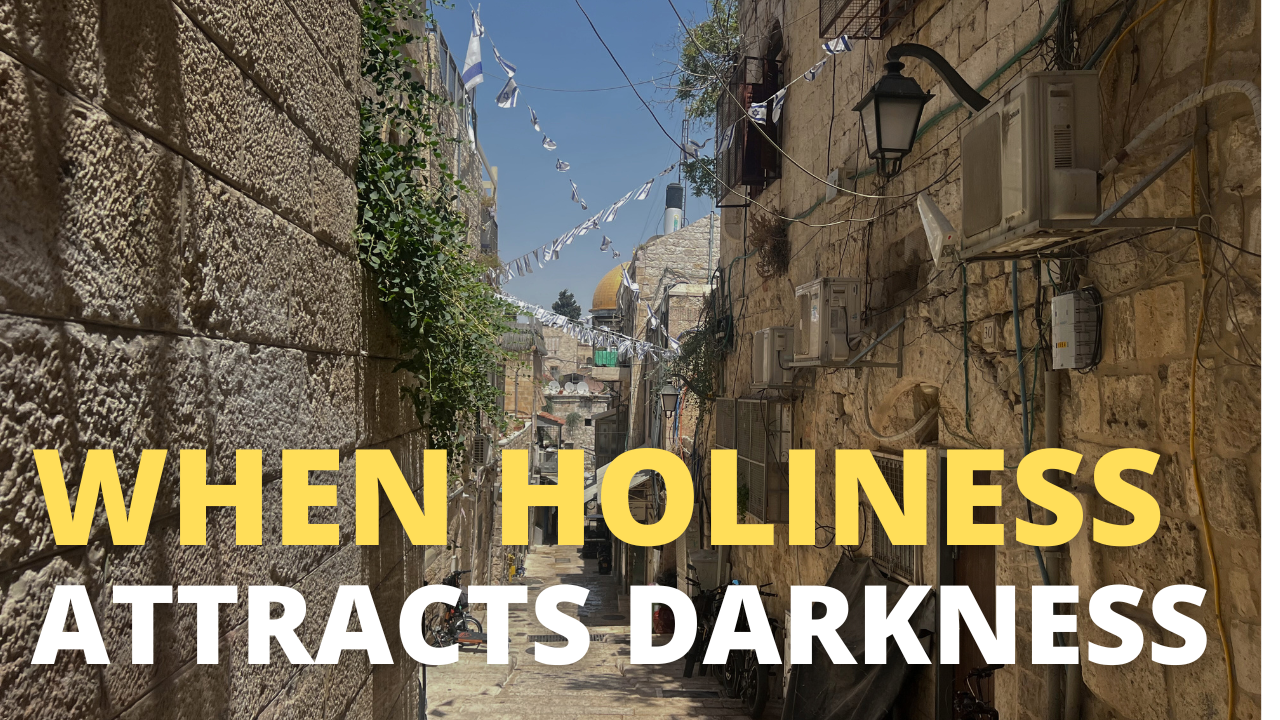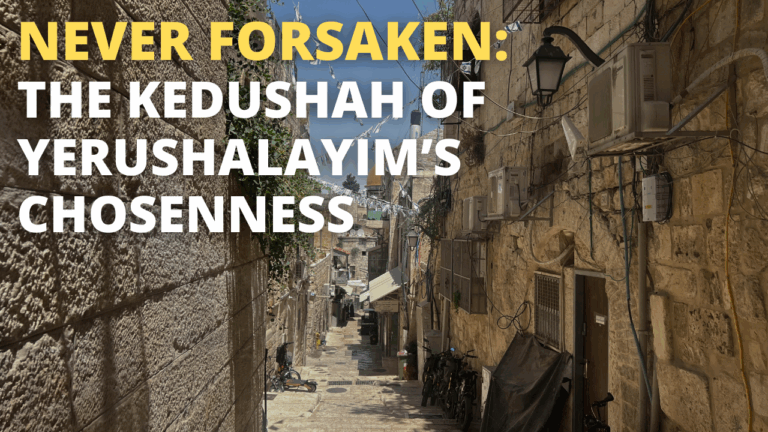When Holiness Attracts Darkness
As Klal Yisrael prepares to enter Eretz Yisrael, HaKadosh Baruch Hu repeatedly warns them to clear the land of the Canaanites. If these evil inhabitants remain, they will become a deep source of trouble for the Jewish people.
Hashem warns in Parshas Ma’asei, “But if you do not drive out the inhabitants of the Land from before you, then those whom you leave over will be as spikes in your eyes and thorns in your sides, and they will harass you in the land in which you settle. (Bamidbar 33:55)”
The Ramban notes the double language “spikes” and “thorns,” interpreting it as a warning of dual danger. First, the Canaanites will “blind” us with their foreign ideologies and idolatry, causing grave spiritual failure. This corruption is metaphorically described as “spikes in the eyes.” Then, they will be able to physically harm the Jewish people and ultimately drive them out of Eretz Yisrael, like a painful thorn that pierces and wounds the body.
The Netziv similarly interprets “spikes” as a reference to spiritual threats. But he adds a shocking insight. He infers from the words “in the land in which you settle” that Eretz Yisrael itself intensifies the danger of ideological seduction. There is something unique about the Land of Israel that makes the yetzer hara’s influence even more dangerous.
The Netziv (in both Ha’amek Davar and Harchev Davar ibid) cites stunning Midrashim that suggests Klal Yisrael is more likely to be soiled with avodah zara in Eretz Yisrael. Most disturbing of all, Yerushalayim ir HaKodesh was the most attractive site for the despicable worship of foreign deities! The Midrash (Bamidbar Rabbah 15:14) recounts that Nevuchadnezar himself mocked the faithful Jews who refused to bow to an idol in Bavel, saying: “Just the other day, did not Jews stream to Jerusalem to worship every conceivable idol?”
How could this be? How could the holiest land on earth, and the city that serves as a beacon to the world, become a hotspot for the worst forms of spiritual corruption?
The answer lies in the twisted nature of the yetzer hara. His goal is not merely to trip us up, but to neutralize our greatest strength. As Shlomo HaMelech writes in Kohelet (7:14), זה לעמת זה עשה אלוקים – God created one thing to balance the other. The Sefarim HaKedoshim explain that God maintains spiritual balance in this world so that we can truly earn our connection to Him. He therefore allows forces of evil to counter those of good. This maintains His hiddenness, thereby preserving our free will and ability to willfully seek Him out.
The Maharal (Netzach Yisrael 4) writes that this is exactly why the yetzer for avodah zara burned so hot in Yerushalayim. The city has a unique spiritual capacity to reveal God’s absolute unity. But the more powerful the kedushah, the more intense the opposition. The yetzer hara flings itself at the holy city, desperate to create chaos and confusion in the place most capable of clarity and connection.
But the Maharal points to an irony: The burning desire for avodah zarah that destroyed the first Beis HaMikdash was no longer present during the second. Instead, as the Gemara in Yoma (10a) teaches, the Second Temple was destroyed due to sinat chinam—baseless hatred.
Why did the yetzer hara change tactics?
During the first temple period, the Jewish people were divided. Ten tribes formed their own distinct northern kingdom and no longer traveled to Yerushalayim. Yerovam, who broke away from Malchus Beis Dovid, ensured that none of his subjects could return to the Mikdash. In this divided reality, Yerushalayim’s unifying power lay dormant and irrelevant. There was no threat of national unity; the yetzer was content.
But in the time of the second Beis HaMikdash, the entire Jewish people had reassembled. They were united around one temple, one Kohen Gadol, and one unified Yerushalayim. The latent power of the holy city to integrate all Jews was awakening.
So the yetzer got to work, unleashing lashon hara, distrust, and hatred in a desperate bid to sabotage Yerushalayim’s power. And our unity collapsed. His success caused the ultimate destruction of the holy city. Yerushalayim, the city whose essence is achdus, could not survive such internal fragmentation.
Now, in the midst of the Three Weeks in which we mourn our baseless hatred destroying our holiest city, we again find ourselves at each other’s throats. The divisions are painful, and the issues are so complicated. One cannot help but feel an intense sense of utter yeush.
But there is a strange comfort in this struggle.
The yetzer hara only fights what threatens him. His fiercest resistance is always reserved for our greatest strengths. The more focused he is on attacking our unity, the more we know how awesome the potential of Medinat Yisrael is to unify every single Jew. The harder he tries to divide, the more vital our efforts to hold each other close.



